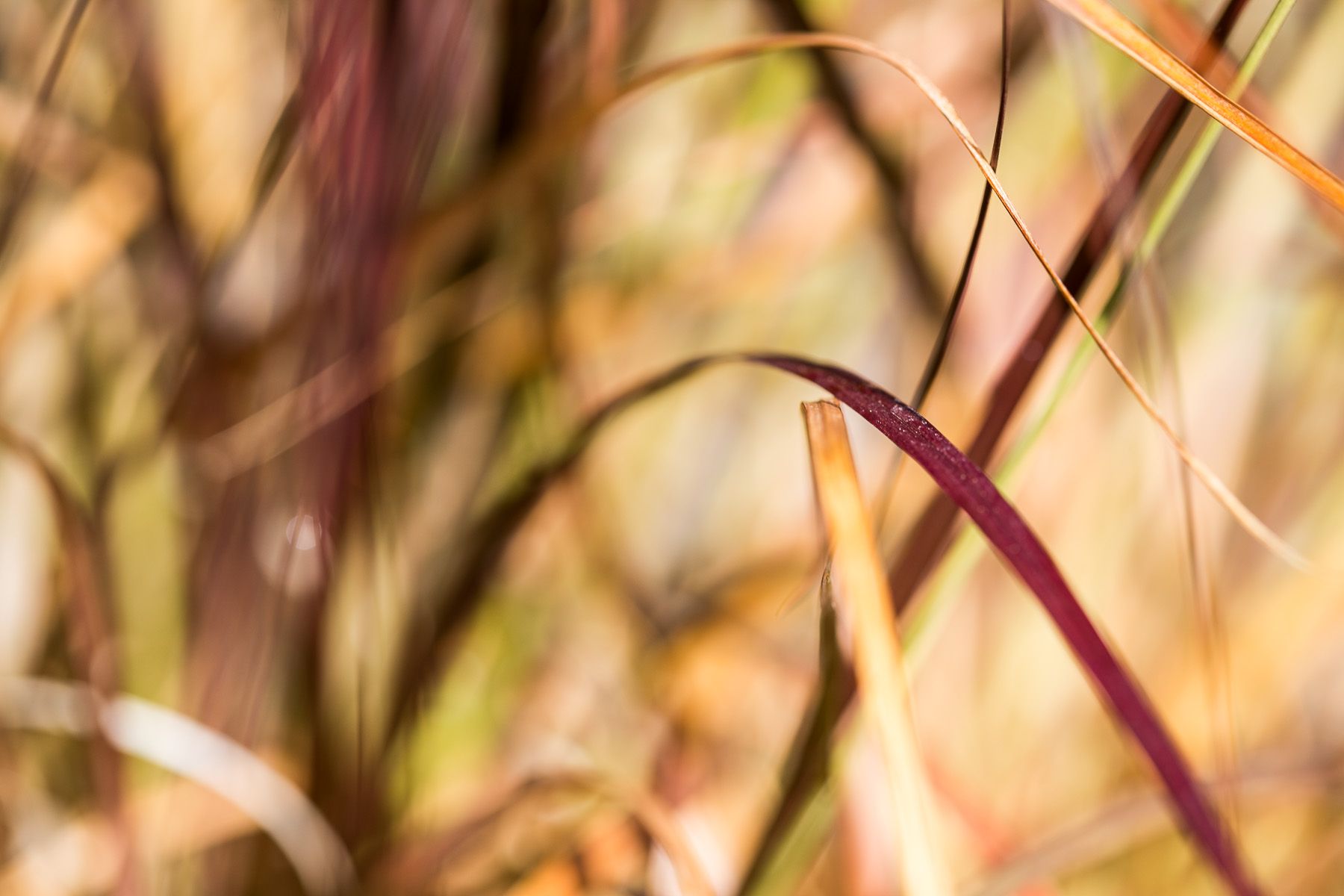Macro. The ability to photograph tiny little subjects opens up a whole new world to exploration. One foggy morning, I saw dew collecting on a fuzzy plant, so I challenged myself to frame this one single plant in as many interesting ways as possible.
(Click following pictures to view in theater mode)

This is fountain grass (Pennisetum setaceum), native to the Middle East and neighboring lands. It was imported to California for an obvious reason: it looks kind of awesome. I mean, seriously, check out how fuzzy it is!
Apparently the fuzzy things are called racemes. The spikes are the plant’s the reproductive method, where the fuzz is composed of many seedlings. Eventually, the spikes are bared as their seeds are blown away by the wind. As the spike matures, it gradually changes from the juvenile deep purple to dried plant yellow. The rest of the plant is yellow, but the stalks add accents of green and the leaves have a purple tint.
Of course, I’m not shooting this plant because of the colorful leaves… it’s all about the detail this time. Shall we step in closer?

That’s small. Like really, really small. The portion of the tip pictured is no bigger than a US quarter. My Canon 100mm f/2.8 Macro is a true 1:1 macro lens, meaning that I can focus on things so close to my camera that they appear actual size on my camera sensor (24mmx36mm). Click on the pic to admire it when even bigger. I can comfortably make a 40’x60′ poster out of this. Wouldn’t that be epic?
Seriously, look at those water droplets! In every drop’s refraction you can almost make out the scene behind the plant. Check out the detail on the purple part of the plant too. There are branches on the shorter fuzz, which in turn is on the tip of a spike, which is growing out of that plant pictured on top. It feels almost fractal, doesn’t it? Nature is awesome.

It was a good day for extreme macros; because it was such a foggy morning, dewdrops were gathering everywhere. Dew was blanketing the lawns, the spiderwebs, and the flowers, but was there the most on these fuzzy plants. The extra surface area, designed to catch the wind, also catches the moisture, which looked like they were decorating the plant with little glistening ornaments of water.
The fog had cleared by late morning, so I was working with the direct sunlight that is so vital for macro shooting (without flash, anyway). Lighting is always tough in the macro range because the effective aperture drops as the lens elements move away from the sensor. At 1:1, f/2.8 behaves more like f/5.6, which means you have to expose for twice as long. Unfortunately, there’s also a tiny margin of error for motion in the macro range. Fully zoomed in and at widest aperture, there is a razor-thin depth of field: I had only about about 0.3mm in focus. That’s the difference between focusing on the tips of the little fuzz or the core, a difference that can manifest in a split second when the plant sways in the wind.
I spent more than half an hour crouched over the plant, trying over and over to nail the desired framing and focus. I had tons of fun though, and on several occasions I couldn’t help but to say “wow.”
That’s what I like about macro photography: the opportunity to revel at nature’s attention to detail, to be humbled by every little plant, insect, and natural phenomenon that we might otherwise trample without a second thought. Nature is beautiful on small scales too, and capturing that with macro is awesome.







